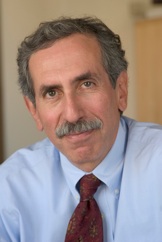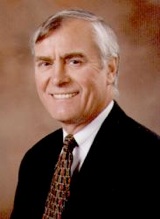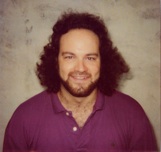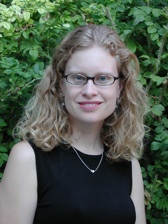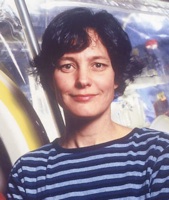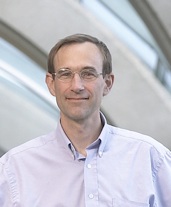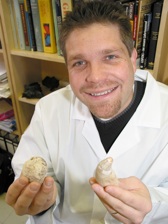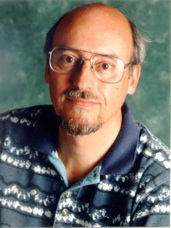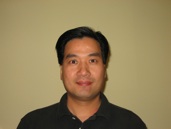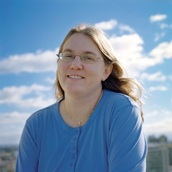Table 1: Dr. Alan Bernstein, O.C., F.R.S.C.,
President of the Canadian Institutes of Health Research
Canadian Health Research: A Model for the World
Dr. Alan Bernstein is the inaugural President of the Canadian Institutes of Health Research(CIHR), Canada's lead agency for the support of health research. An internationally respected researcher,mentor and scientific leader, he has made key contributions to our understanding of embryonic development, hematopoiesis and cancer. Prior to his appointment at CIHR in 2000, he was Director of Research at the Samuel Lunenfeld Research Institute of Mount Sinai Hospital from 1994-2000 and Professor in the Department of Molecular and Medical Genetics at the University of Toronto, where he is a Senior Fellow of Massey College. Dr. Bernstein has received numerous awards, including the McLaughlin Medal of the Royal Society of Canada, the Genetics Society of Canada Award of Excellence, the 2001 Australian Society of Medical Research Medal and the Order of Canada in 2002.
RCI gratefully acknowledges the support of CIHR for providing travel and accommodation for Dr. Bernstein to participate in this event.
Table 2: Arthur J. Carty, O.C., Ph.D., D.Sc.(hc), F.R.S.C.,
National Science Advisor to the Government of Canada
The Changing Face of Science
As National Science Advisor to the Government of Canada after 10 years at the helm of National Research Council of Canada (NRC), Dr. Carty has unique insight into the changing face of science in Canada. Dr. Carty holds 5 patents, maintains an active research group at NRC and continues to publish in his field of synthetic chemistry and metallic clusters. He is a former President of the Canadian Society
for Chemistry, Honorary Fellow of the Chemical Institute of Canada and of the Fields Institute for Research in the Mathematical Sciences and a Fellow of the Royal Society of Canada. He has received thirteen honorary degrees from Canadian and foreign universities, is an Officer of the Order of Canada and Officier de l’Ordre national du Mérite of France. He serves on several Boards including the Canadian Space Agency, the Communications Research Centre and MITACS, a Federal Network of Centres of Excellence. He is Chairman of the Board of
the Canadian Light Source and of the International Advisory Board of the APEC Centre for Technology Foresight.
Table 3: Rob Macdonald, Ph.D., Associate Professor, Faculty of Environmental Studies, York University
Sustainable Energy Strategies for the 21st Century
While nuclear fission is touted as the answer to climate change, serious question marks hang over this technology, and a sustainable energy future will likely require an evolving mix of transition fossil fuel strategies, much greater energy efficiency, and renewable energy sources, all of which require supportive policies beginning now. A physicist by training, Rob’s teaching and research focuses on energy strategies supportive of sustainable development: renewable energy, energy efficiency, and community-based power. Rob serves on the Board of Directors of the Toronto Renewable Energy Collaborative (TREC) that in joint venture with Toronto Hydro put in place the large wind turbine at Exhibition Place on Toronto’s waterfront. TREC is currently working towards a much larger, community-owned wind project, called LakeWind. Graduate students from Environmental Studies have played a key role in creating and running TREC and also the Ontario Sustainable Energy Association, the organization that was responsible in large measure for the recent renewable energy policy announced by the Government of Ontario that is strongly supportive of community-based renewable energy projects. Rob serves on the Board of Directors of Shaman Power Company that owned and operates small run-of-the-river hydroelectric generating stations in Ontario.
Table 4: Harry E. Ruda, Ph.D., Director, Energenius Centre for Advanced Nanotechnology, Energenius Chair in Advanced Nanotechnology, Director, Electronic-Photonic Materials Group
Nanotechnology 101
An emerging, multidisciplinary field for designing, fabricating and applying nanometre-scale materials, structures and devices, nanotechnology is poised to become one of the dominant technologies of the 21st century. Relying on novel phenomena arising in nanometre-sized clusters of atoms - nanostructures - harnessing them is expected to lay the foundation for new products and processes. Director of Canada’s first centre for nanotechnology research, the Energenius Centre for Advanced Nanotechnology (ECAN), Dr. Ruda is an internationally-recognized expert, with over 20 years of nanotechnology research experience. He holds a Ph.D. from M.I.T., and completed an IBM postdoctoral fellowship before joining the University of Toronto. Specializing in nanodevice development and fabrication, his work in photonic crystals - inorganic structures that can guide and confine light - has application in telecommunications, displays, sensing and security. In addition, he is working on a new class of semiconductor nanostructures called nanowires, which hold great promise for future high-speed low-power electronics and new classes of photonic devices, such as nanolasers, that can probe the contents of individual cells.
Table 5: Jeffrey S. Rosenthal, Ph.D., Professor,
Department of Statistics, University of Toronto
Playing the Numbers: Gambling and the Curious World of Probabilities
How can you use probability to block spam? What are your odds at roulette, blackjack? Should you try a new medical treatment – or even ask out an attractive colleague? These are just a few of conversational threads you can pursue over dinner with Jeffrey S. Rosenthal, professor in the Department of Statistics at the University of Toronto. Author of the recent international bestseller Struck by Lightning: The Curious World of Probabilities, he’s an amateur improv comedian
who received his Ph.D. in Mathematics from Harvard at the age of 24. His professional specialty is Markov chain Monte Carlo randomized computer algorithms, which use “pseudo-random numbers” to calculate quantities too difficult to compute directly. In addition to improv, he is also an amateur musician and computer game programmer.
Table 6: Martin J. Steinbach, Ph.D., Professor of Ophthalmology and Director of Ophthalmology Research, University of Toronto, and Distinguished Research Professor, York University
Blinding Eye Diseases: New Hopes for their Treatment
People with eyes that do not align frequently have surgical or pharmacological treatment of their eye muscles. Studying the adaptations made after such treatments provides insight into the kinds of information the brain uses to stay informed about the positions and movements of its eyes. Dr. Steinbach studies eye movements and visual development processes in people with disordered vision. He has served on the Advisory Board of the Canadian Institutes of Health Research, Institute of Neuroscience, Mental Health and Addiction, and is the President of the Vision Health Research Council of Canada. He represents Canadian researchers on the National Coalition for Vision Health and is an Advisor to the Canadian National Institute for the Blind as well as the Canadian Foundation Fighting Blindness. A past Trustee and Vice-President of the Association for Research in Vision and Ophthalmology, he is a professor at the U of T, founding member of the Centre for Vision Research at York, and Director of Vision Science Research, Toronto Western Hospital.
RCI gratefully acknowledges the support of CIHR for allowing us to present Dr. Steinbach.
Table 7: Alan Fung, Ph.D., P. Eng., Associate Professor, Mechanical Engineering, Ryerson University
Net-Zero Energy Buildings
Buildings collectively consume approximately 30% of Canada’s overall energy requirements, half our electricity needs and account for 29% of our greenhouse gas emissions. Net-Zero Energy (NZE) buildings combine efficient construction design, energy-efficient appliances and passive solar energy, integrated with commercially available renewable energy systems to achieve annual NZE consumption. If widely adopted, NZE buildings could significantly reduce our impact on the environment. Are energy self-sufficient buildings technologically or economically possible in the harsh Canadian climate? What are the barriers to their adoption? Dr. Alan Fung has over 15 years of research experience in sustainable/alternative energy and advanced integrated building systems. The co-founder and manager/principal researcher of the Canadian Residential Energy End-Use Data and Analysis Centre (CREEDAC) at Dalhousie University from 1995 to 2005, he is a member of the NSERC Solar Buildings Research Network, dedicated to achieving cost effective NZE buildings in Canada. Dr. Fung is a key member of a winning team in the CMHC Equilibrium Houses competition to design, build, demonstrate, market and evaluate three NZE townhouses slated for development in downtown Toronto.
Table 8: Heather Boon, B.Sc. Ph.M., Ph.D., Assistant Professor, Leslie Dan Faculty of Pharmacy, University of Toronto
Complementary and Alternative Medicine
A Canadian Institutes of Health (CIHR) research New Investigator, Heather Boon originally trained as a pharmacist. After completing a Ph.D. in medical at the University of Toronto and a Post-doctoral Fellowship in Centre for Studies in Family Medicine at the University of Western Ontario, she went on to become one of the Founding Directors of IN-CAM, the Canadian Interdisciplinary Network for Complementary and Alternative Medicine Research. She is also the Chair of Health Canada’s Expert Advisory Committee for Natural Health Products. In addition to numerous peer-reviewed articles and book chapters on complementary/alternative medicine, she is the co-author of A Complete Natural Medicine Guide to the 50 Most Common Herbs: A Botanical Pharmacy. Her primary research interests are patients’ use of complementary/alternative medicine, the safety and efficacy of natural health products and complementary/alternative medicine regulation and policy issues.
RCI gratefully acknowledges the support of CIHR for allowing us to present Dr. Boon.
Table 9: Deb Fels, Ph.D., P. Eng., School of Information Technology Management, Ryerson University
Building the Orgasmatron: Conveying Entertainment Using Multi-Sensory Stimuli
Ever think anyone would try to build the “Orgasmatron” from the 1970s Woody Allen movie Sleeper? Dr. Deb Fels and her team of students, researchers and artists are doing just that - building a multi-sensory entertainment system, called ASID, for people with different sensory needs. Imagine being blind and having the same entertainment experience watching a movie as someone who is sighted. Join Dr. Fels for a discussion about how entertainment experiences can be made more accessible to people with disabilities and what that might mean for people without disabilities. Dr. Fels holds a Ph.D. in Human Factors in Industrial Engineering, a Masters degree in Health Science in Clinical Engineering and was a post-doctoral fellow at the Bloorview-MacMillan Centre in Toronto. At Ryerson she established the Centre for Learning Technologies to carry out research on assistive technologies for people with disabilities, particularly related to learning and entertainment applications. She was part of the team that invented PEBBLES, an internationally recognized system that links hospitalized children to their schools. In 2001, Dr. Fels received a top 40 Under 40 award.
Table 10: Greg Naterer, Ph.D., P.Eng., F.C.S.M.E.,
Professor of Mechanical Engineering, UOIT
Hydrogen Power: Is it for Me or My Grandkids?
A professor of Mechanical Engineering at UOIT, Dr. Greg Naterer’s research includes the design of energy systems, hydrogen technologies and heat transfer. He leads a 23-member multidisciplinary research team, involving Atomic Energy of Canada, Argonne National Laboratory, U.S., and universities across Ontario and abroad to design a copper- chlorine cycle for producing hydrogen from nuclear energy. The project aims to combine steam with intermediate copper and chlorine
compounds in a sequence of steps to split water into hydrogen and oxygen. The Cu-Cl thermochemical cycle could eventually be linked with Canada’s nuclear reactors to achieve higher efficiencies, lower environmental impact and lower costs of hydrogen production than any other conventional technology. A Fellow of the Canadian Society for Mechanical Engineering (CSME ) and an Associate Fellow of the American Institute of Aeronautics and Astronautics, his most recent book, Entropy Based Design of Thermal Engineering Systems, will be published in 2007.
Table 11: Mark Loeb, Ph.D.
Infectious Diseases and Pandemic Preparedness
With research interests ranging from emerging infectious diseases, respiratory infections, antimicrobial resistance to hospital epidemiology, Dr. Mark Loeb has served on numerous national and international advisory committees. He is Principal Investigator of a NIAID (US-based National Institute of Allergy and Infectious Disease) on Population Genetics Research Program on West Nile Virus and a CIHR New Emerging Team on antibiotic use and resistance in seniors. He has led CIHR-funded multi-disciplinary teams on pneumonia and SARS and is conducting a CIHR-funded cohort study on West Nile virus. Associate Editor of ACP Journal Club and Evidence-Based Medicine, he is also Co-editor of the first textbook on Evidence-Based Infectious Diseases. Recent honours include the 2006 Gold Medal for Medicine from the Royal College of Physicians and Surgeons of Canada and the Society for Healthcare Epidemiology of America Investigator Award.
RCI gratefully acknowledges the support of CIHR for allowing us to present Dr. Loeb.
Table 12: Molly Schoichet, Ph.D., Professor of Chemical Engineering and Applied Chemistry, Chemistry and Biomaterials and Biomedical Engineering at the University of Toronto. Canada Research Chair in Tissue Engineering
New Materials for Old Joints
A leading expert in fluoropolymer synthesis and applications for industrial coatings, Dr. Schoichet is the recipient of such prestigious distinctions as NSERC’s Steacie Fellowship, CIAR’s Young Explorer’s Award (to the top 20 scientists under 40 in Canada), CSChE’s Syncrude Innovation Award, Canada’s “Top 40 Under 40” and the University of Toronto’s McLean award. She is an expert in the study of Polymers for Regeneration - materials that promote healing in the body, specifically for nerve regeneration. Her laboratory is investigating two novel strategies for spinal cord injury repair - one involving injection of a drug delivery vehicle. Dr. Schoichet’s laboratory has numerous patents published and pending on drug delivery and scaffold design. She is the founder of Matregen Corp., and co-founder of BoneTec Corp, both spin-offs from her research.
Table 13: Jordan Peterson, Ph.D., Professor of Psychology, University of Toronto
Music and the Mind
For reasons that are poorly understood, music can produce a deep sense of meaning. Is the experience an illusion? We are biologically hardwired to respond to information about the structure of the environment with emotion and motivation: music activates these systems. A practicing clinical psychologist and professor of psychology at the U of T, Dr. Jordan Peterson has published extensively on self-deception, personality, creativity, mythology, motivation for social conflict, aggression and alcoholism. He is author of Maps of Meaning: The Architecture of Belief, which presents a comprehensive theory of the grammar of religious and ideological thought, and describes the implications of that grammar for understanding ideological conflict. His most recent book, Self-Deception Explained, explores responses to anomaly: active, healthy exploration and passive, unhealthy avoidance.
Table 14: David Wilkinson, Ph.D., Professor, McMaster University
Driving Away Lightly: Cars of the Future
Lighter materials are key to more fuel-efficient passenger vehicles. High strength steels enable thinner structures; aluminum’s low density reduces weight - but each produces a myriad of engineering challenges. Can they be fabricated to the desired shape? Welded? Coated for corrosion protection? Crash worthiness maintained - all without driving up costs? How far can we go in reducing vehicle fuel consumption by developing smart manufacturing processes and novel materials? Dr. Wilkinson has over 30 years experience in the science of structural materials and is the author of over 200 scientific publications, specializing in the mechanical behaviour of both metals and ceramics. He is the founding Director of the McMaster Centre for Automotive Materials and Director of the McMaster Manufacturing Research Institute. He is a recipient of the Canadian Materials Physics Medal (2004) and the Dofasco Award of the Metallurgical Society of CIM ( 2004). He was recently awarded $46 million by the Government of Ontario to co-direct a new initiative for Automotive Manufacturing Innovation.
Table 15: Sean Russell, M.Sc. (Nuclear Physics), Technical Advisor, Nuclear Waste Management Organization
Nuclear Waste Disposal
Sean Russell has spent over twenty years assessing radioactive waste management facilities and health physics-related activities at Ontario Power Generation Inc. (OPG). Involved in Canadian programs for managing used fuel and low and intermediate-level radioactive waste, he has developed mathematical models and computer codes to determine the safety of nuclear facilities, and managed Canadian research and development programs for deep geological repositories for radioactive waste. Over the past several years, Sean has provided technical support for the development of conceptual designs and cost estimates for various approaches to the long-term management of nuclear fuel waste. Sean recently represented the NWMO in an extensive series of public engagement sessions on approaches for long-term management of Canada’s used nuclear fuel and was one of the principal authors of the NWMO’s 2005 Final Study and recommendations to the Government of Canada, Choosing a Way Forward: the Future Management of Canada’s Used Nuclear Fuel.
Table 16: Peter Cheung, Ph.D., Principal Investigator, Division of Signaling Biology, Ontario Cancer Institute and Assistant Professor, Department of Medical Biophysics, University of Toronto
DNA and Genome Regulation: The Next Frontier
If DNA is the software of the cell, how does the operating system work? With the completion of the Human Genome Project, scientists have turned their attention to understanding how DNA is regulated and controlled within the cell. Chromatin, the protein framework that provides strength and physical organization to DNA, has only recently been recognized to also exert tight control over DNA’s function in normal processes (growth and development) as well as in disease (cancer). Dr. Cheung, chromatin scientist and cancer researcher, is part of the research forefront of this emerging field. Join him in a discussion of the “next frontier” of epigenetics and medicine. With a Ph.D. from McMaster University and an M.Sc. and B.Sc. from the University of British Columbia, Dr. Cheung holds the Canada Research Chair in Chromatin Regulation and his work is funded by the Canadian Institute for Health Research and by the National Cancer Institute of Canada. He has published extensively on epigenetic regulation by histone modification and related topics.
RCI gratefully acknowledges the support of CIHR for allowing us to present Dr. Cheung.
Table 17: Amanda Peet, Ph.D., Professor of Physics, University of Toronto
String Theory: The Theory of Everything
String theory, a relatively new area of theoretical physics, is dedicated to uncovering the deep structure of all forces and matter in the universe. Join Dr. Amanda Peet for a discussion about spacetime, particle physics, quantum theory, extra dimensions, string theory - without the math or jargon. A member of the Cosmology and Gravity Program of the Canadian Institute for Advanced Research (CIAR), Dr. Peet applies “stringy ideas” to explain deep questions about gravity, black holes, the Big Bang - and especially to puzzles about spacetime when gravitational forces are so extreme that Einstein’s theory has a core failure. A native of New Zealand, Dr. Peet earned her Ph.D. at Stanford and held postdoctoral fellowships at Princeton and UC Santa Barbara. At the University of Toronto, she established a new research group on string theory, a field of theoretical physics closely related to cosmology, particle physics, and mathematical geometry. Professional honours include an Ontario Premier’s Research Excellence Award (PREA), a fellowship at Harvard’s Radcliffe Institute, and a research fellowship from the Alfred P. Sloan Foundation.
Table 18: Stephen Julian, Ph.D., Canada Research Chair in
Low Temperature Physics, University of Toronto
Magnetism, Superconductivity - and the “New” Matter
The quantum mechanics of condensed matter underlies our modern electronic age. Relying on well-established physical principles, it produced the integrated circuit, magnetic resonance imaging (MRI), low-loss optical fibres, solid-state lasers, light-emitting diodes, magnetic recording disks, and high-performance composite materials that have transformed the world. But a host of newly identified properties of matter promise an even more profound transformation. Today’s condensed matter physics aims to create entirely new classes of materials - “artificially structured” materials that do not exist in nature and whose sizes range to the subatomic. Dr. Julian, Canada Research Chair in Low Temperature Physics, leads a research program investigating these special properties of matter. An experimentalist, he studies magnetism and superconductivity, using high-pressure techniques to focus on the connection between these two phenomena. Faculty member at the renowned Cavendish Laboratory of the University of Cambridge from 1994 to 2004, he served as Head of the Low Temperature Physics group and was a Fellow of Trinity College, Cambridge. In 2004 he returned to Canada to take up a Tier 1 Canada Research Chair at the University of Toronto, where he is establishing a new centre for high-pressure research.
Table 19: Raymond Laflamme, Ph.D., Director, Institute for Quantum Computing, University of Waterloo
The Next Big Information Revolution: Quantum Computing
Popularly known for changing Stephen Hawking’s mind (with Don Page) on the reversal of time in a contracting Universe, Dr. Ray LaFlamme is co-founder and Director of the Institute for Quantum Computing at the University of Waterloo. Based on nature’s strange behaviour at the atomic and subatomic scales, Quantum Computing promises to revolutionize information security - from financial to military - revitalize existing technologies, create new ones, provide startling new insights into nature and the origin of the universe - and change the way we think about information and reality itself. Born in Quebec City, he studied undergraduate physics at Université Laval, and did his PhD in the Department of Applied Mathematics and Theoretical Physics under the direction of Stephen Hawking. After research stints at UBC, Cambridge and the Los Alamos National Laboratory, he returned to Canada, taking up positions at the Perimeter Institute for Theoretical Physics and the U of Waterloo. Ray holds a Canada Research Chair in Quantum Information.
Table 20: Elizabeth A. Edwards, Ph.D., P.Eng., Professor, Department of Chemical Engineering and Applied Chemistry, University of Toronto
Groundwater Contamination and Bioremediation
With over 20 years of experience in anaerobic biodegradation and groundwater bioremediation processes, Dr. Elizabeth Edwards’ research involves the characterization of microbial communities that degrade pollutants and the development of molecular tools such as nucleic acid probes and DNA microarray technology to detect gene expression in groundwater or soil samples. She collaborates extensively with GeoSyntec Consultants in Guelph to develop bioremediation and bioaugmentation strategies for chlorinated solvent remediation. Dr. Edwards held an NSERC Women’s Faculty Award early in her academic career, and currently holds a Premier’s Research Excellence Award from the Ontario Government. She holds Bachelor’s and Master’s Degrees in Chemical Engineering from McGill and a Ph.D.(1993) in Civil and Environmental Engineering from Stanford.
Table 21: Janet Rossant, Ph.D., F.R.S., F.R.S.C., Senior Scientist and Chief of Research, Hospital for Sick Children, Toronto; University Professor, University of Toronto, and Professor in the Department of Molecular and Medical Genetics and the Department of Obstetrics/Gynaecology, University of Toronto
Mammalian Developmental Biology and Genetics
Dr. Rossant’s research centres on understanding the genetic control of normal and abnormal development in the early mouse embryo using both cellular and genetic manipulation techniques. Her work led to the discovery of a novel placental stem cell type, the trophoblast stem cell. Deputy Scientific Director of the Canadian Stem Cell Network, she also directs the Centre for Modelling Human Disease in Toronto, which is undertaking genome-wide mutagenesis in mice to develop new mouse models of human disease. Trained at Oxford and Cambridge, she is a Fellow of both the Royal Societies of London and Canada and is a Distinguished Investigator of the Canadian Institutes of Health Research. Actively involved in the international developmental biology community, she was an Editor of the journal Development and was President of the Society for Developmental Biology. She has also been involved in public issues related to developmental biology, most recently serving as Chair of the Canadian Institutes for Health Research working group on stem cell research and as a member of the National Academies Stem Cell Guidelines Panel.
RCI gratefully acknowledges the support of CIHR for allowing us to present Dr. Rossant.
Table 22: Peter A. Taylor, Ph.D., Department of Earth and Space Science & Engineering, York University
The Phoenix Mission to Mars
A professor of Atmospheric Science at York University since 1988, Dr. Taylor is currently working on the Phoenix Mars Mission, the first in NASA’s “Scout Program”. Scheduled to launch in August 2007 and land on Mars in May 2008, it is designed to study the history of water and search for complex organic molecules in the ice-rich soil of the Martian arctic. Canada is providing a meteorological package including lidar (Light-Imaging Detection and Ranging), an optical remote sensing technology to measure dust concentrations and cloud heights. Prior to joining York University, Peter was a Senior Research Scientist with the Meteorological Service of Canada, taught Mathematics at the University of Toronto and Oceanography at the University of Southampton (UK). He was the recipient of the 1996 Patterson Distinguished Service Medal from Environment Canada and the 2003 Templin award from the Canadian Wind Energy Association. Past President and Fellow of the Canadian Meteorological and Oceanographic Society, his primary research lies in atmospheric boundary layer and mesoscale studies using a range of numerical models and conducting field programs.
Table 23: Peter Szatmari, M.D., F.R.C.P.C., Director, Offord Centre for Child Studies; Vice-Chair, Research, and Head of the Division of Child Psychiatry and Behavioural Neurosciences, McMaster University
The Autism Explosion
Dr. Peter Szatmari has been working in the field of autism and pervasive developmental disorders (PDD) for more than 25 years. Instrumental in developing the Pervasive Developmental Disorder Team at Chedoke Child and Family Centre, a regional diagnostic and treatment program for children with autism, he is a founding member of the Canadian Autism Intervention Research Network (CAIRN) a national network of parents, clinicians, policy makers and scientists dedicated to launching a research agenda in early intervention in autism. His previous research has focused on studying the validity of Asperger Syndrome and the limits and boundaries of the clinical features of Autism Spectrum Disorders (ASD). Dr. Szatmari is currently part of an international collaboration investigating the genetics of autism, a long-term study of autistic pre-schoolers that will try to identify factors that contribute to positive outcomes for these children and a study of infant siblings of children with ASD. He consults regularly to government agencies in Canada, the U.S. and internationally on research and treatment services for children with autism spectrum disorders, and is the author of the book, A Mind Apart; Understanding Autism and Asperger Syndrome.
Table 24: Hendrik Poinar, Ph.D., Assistant Professor, Departments of Anthropology and Pathology and Molecular
Medicine, McMaster University
Sequencing the DNA of the Woolly Mammoth
A molecular evolutionary geneticist and biological anthropologist by training, Dr. Hendrik Poinar is best known for his work on woolly mammoths – and HIV. Gathering and extracting DNA samples from the jawbone of a woolly mammoth preserved in permafrost for almost 30,000 years and stored in large ice caves in a museum in Siberia, the specimens revealed that its closest living relative was the African elephant. Dr.Poinar’s specialty is the chemical and molecular analysis of fossilized feces, or coprolites. His findings address evolutionary and anthropological questions: from diet and gender differences of hunter-gather populations; Neandertal language abilities, to whether or not early humans interbred with Neanderthals. He is also working to determine the timing and origin of HIV using archival blood and brain tissue samples. He holds a Ph.D. from the Lüdwig Maximillians Universität München,
and was a post-doctoral fellow at the Max Planck Institute for Evolutionary Anthropology prior to joining McMaster University. He has established a world-class molecular anthropology lab that will devise novel techniques to extract information from ancient DNA.



